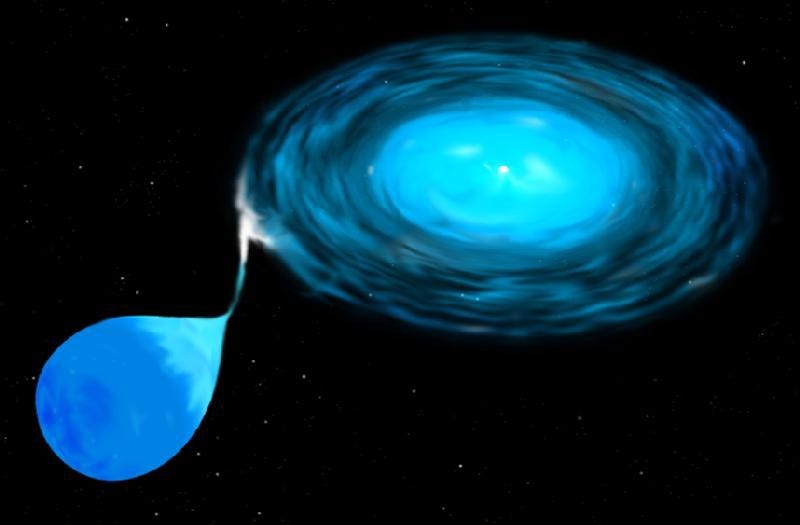Don’t judge a white dwarf by its size; it can pack the mass of our Sun in the size of Earth
An overview of white dwarf stars, their various forms and value to science.
When our Sun grows old and its size goes down, it will form a little white dwarf star, the end stage of sun-like stars. Don’t judge a white dwarf star by its size though!
#1: White dwarf stars are the size of the Earth, but have the mass of a Sun
One of the first white dwarfs to be found, Sirius B is merely the size of the Earth, making it quite small for a star.

And yet it manages to cram about the same mass as our Sun, making it much denser. Sirius B’s powerful gravitational field is 350,000 times greater than Earth’s, meaning that a 68 kg person would weigh 25 million kg on its surface!
Such high density was thought to be impossible by the scientific community a century ago, paraphrased nicely by Arthur Eddington, after the discovery of such a white dwarf:
We learn about the stars by receiving and interpreting the messages which their light brings to us. The message of the Companion of Sirius when it was decoded ran: “I am composed of material 3,000 times denser than anything you have ever come across; a ton of my material would be a little nugget that you could put in a matchbox.” What reply can one make to such a message? The reply which most of us made in 1914 was — “Shut up. Don’t talk nonsense.”
#2: More massive a white dwarf, the less its size!
Past the red giant stage and shedding of all the outer layers of gas, the leftover core of sun-like stars is not capable of fusing matter to release light and energy. Gravity thus takes over and crams the electrons in such stars to give the high density that they are known for. More the gravity due to higher mass, more the crushing.

For gravity to compress a white dwarf even further, it must force all the electrons to occupy all available spaces (energy states). Beyond that, quantum mechanics won’t allow gravity to compress the star any more: Pauli’s Exclusion Principle says that no 2 electrons can occupy the same energy state. This upper limit for gravity being able to crush a white dwarf gives the maximum mass it can have, known as the Chandrasekhar limit. The most massive white dwarf star is thus the smallest one around.
#3: White dwarfs can actually go supernova!
White dwarf stars are sometimes found in close binary systems where the other star is less massive than our Sun is. Due to the proximity of these stars and the high gravitational pull of the white dwarf, it pulls in matter from the companion!

The matter forms an accretion disk around the white dwarf (due to conservation of angular momentum) and starts falling on it with tremendous amounts of energy. The in-falling matter increases the density of the white dwarf. If the density crosses the maximum limit for the stability of a white dwarf (as discussed above), it results in a runaway carbon fusion detonation that causes the entire star to go supernova and destroys the entire star in a matter of seconds.
#4: White dwarfs can be pulsars too!
The white dwarf star AR Sco has an electromagnetic field 100 million times more powerful than the Earth’s and it rotates around itself in a mere 2 minutes. Such a powerful magnetic field produces intense lighthouse-like beams of radiation and particles, which shoot its companion red dwarf star to generate an enormous electric current in it.
Such highly polarized radiation emission controlled by the star’s magnetic field was only ever seen before in neutron stars. Such stars are called pulsars and now white dwarfs have the claim to that fame too.
#5: White dwarfs as a bright source of gravitational waves
1600 light-years away, two dense white dwarfs are locked in a spiral dance around each other, every orbit lasting a mere 5 minutes. They will eventually collapse together to form an even denser neutron star, as the orbit decays continually thanks to laws of general relativity. This releases gravitational waves as visualized here:

It is expected that this system is one of the brightest sources of gravitational waves known to humans and will be a prime target for the upcoming gravitational wave space observatory LISA.
#6: White dwarfs can be used to determine the age of the Universe
Even though white dwarfs don’t fuse matter to generate heat and light, their small surface area implies they cool very slowly, thus remaining hot for a long time. The cooler a white dwarf star gets, the more time it takes to cool further, like a cup of coffee. Since the Universe is still quite young, all known white dwarfs are still quite hot and shine white. It will take billions of years for a white dwarf to go dim red and start dying.
As the cooling takes place slower and slower with time, it will take trillions of years for a white dwarf to become a dead black dwarf. By looking at the stage oflescope was used to determine the age of the Universe. The results were in agreement with other estimates of 13–14 billions years.
Oh, and seismological observations of a white dwarf suggest that their cores are crystallized like diamonds. That’s pretty dense, literally.
White dwarfs are very interesting and enable scientists to test a wide variety of physics. From studying a type of supernovae to determining the age of the Universe to being a future gravitational wave observatory, white dwarfs are of unique scientific value.
PS: I did an Astrophysics research project on a white dwarf star in a binary star system, studying the X-ray pulsations of it. The system is fascinating!
